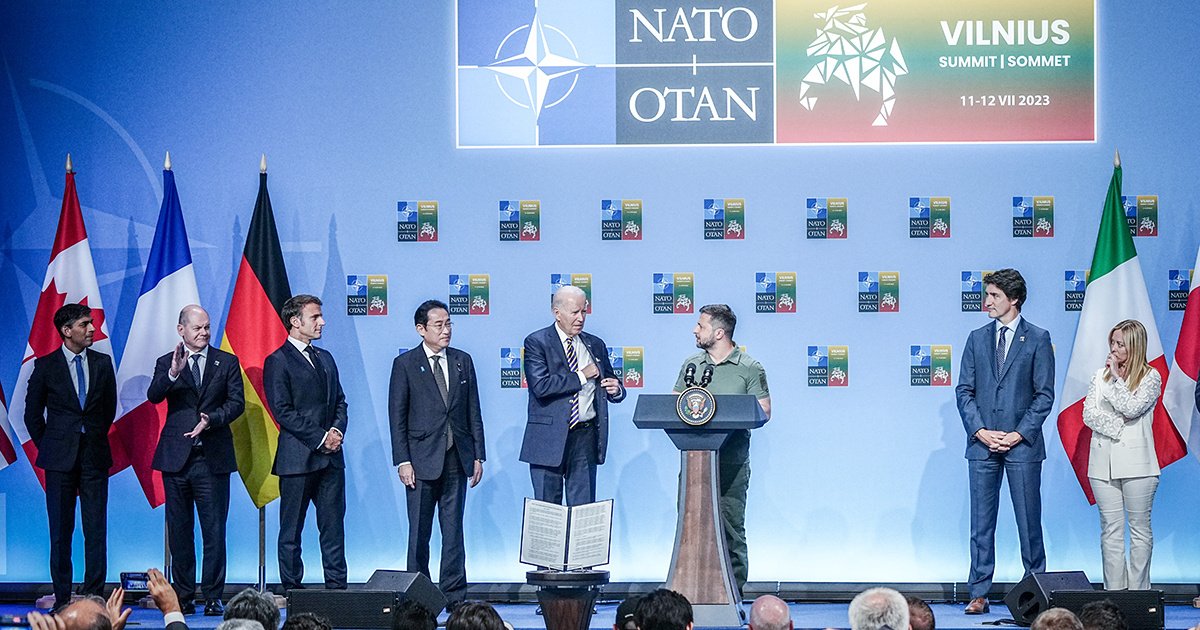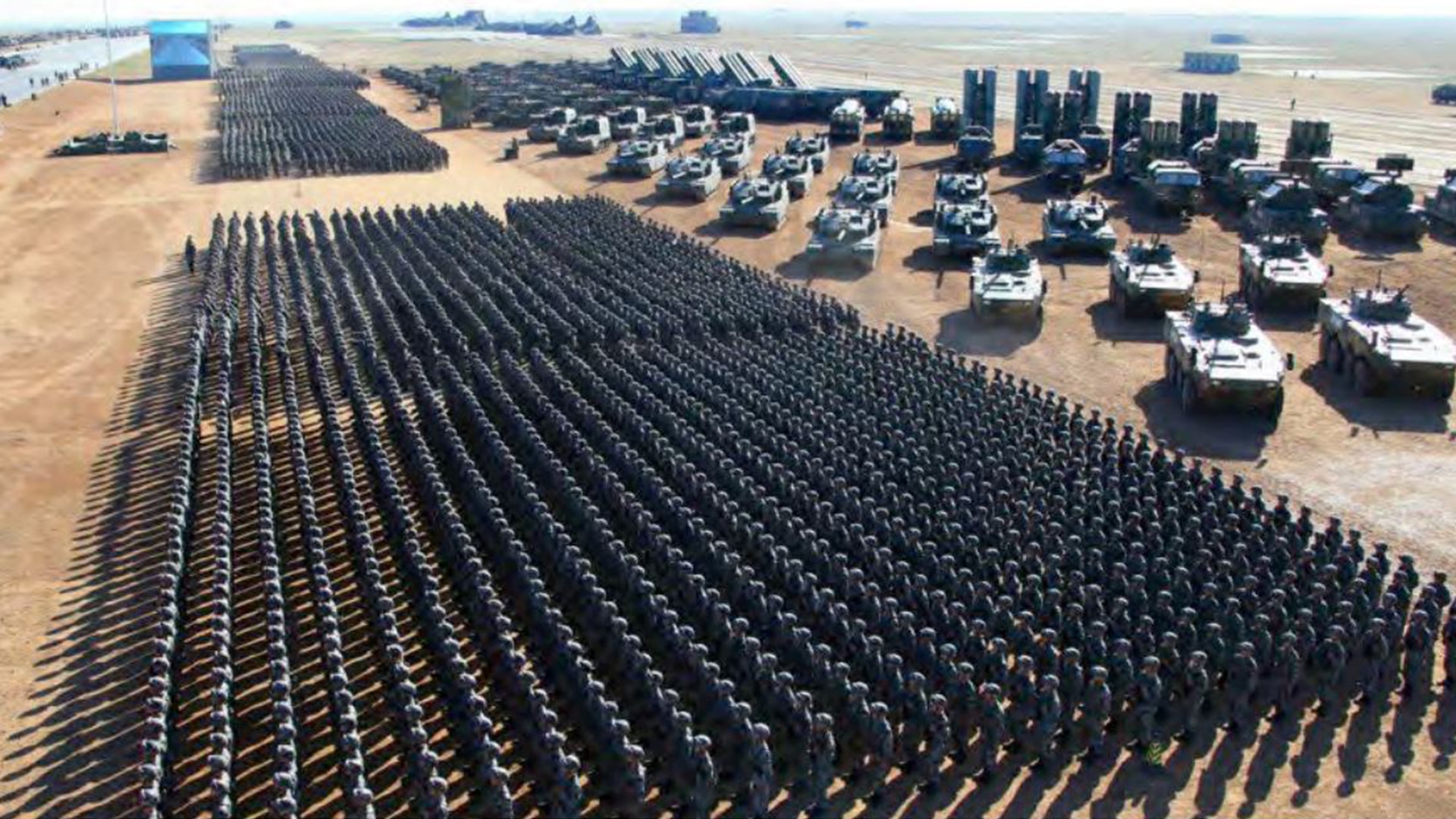
Unprecedented Rise in Global Military Expenditure
As European and Middle East Spending Surges
Stockholm International Peace Research Institute
Download the SIPRI Fact Sheet here
STOCKHOLM (April 28, 2025) — World military expenditure reached $2718 billion in 2024, an increase of 9.4 percent in real terms from 2023 and the steepest year-on-year rise since at least the end of the cold war. Military spending increased in all world regions, with particularly rapid growth in both Europe and the Middle East.
The top five military spenders — the United States, China, Russia, Germany and India — accounted for 60 percent of the global total, with combined spending of $1635 billion, according to new data published today by the Stockholm International Peace Research Institute (SIPRI), available at www.sipri.org.

Global Military Expenditures
Steepest Rise Since End of Cold War
Global military expenditure increased to $2718 billion in 2024, the 10th year of consecutive rises. The world’s 15 largest spenders in 2024 all increased their military expenditure. The global military burden—the share of global gross domestic product (GDP) devoted to military expenditure—increased to 2.5 percent in 2024.
‘Over 100 countries around the world raised their military spending in 2024. As governments increasingly prioritize military security, often at the expense of other budget areas, the economic and social trade-offs could have significant effects on societies for years to come,’ said Xiao Liang, Researcher with the SIPRI Military Expenditure and Arms Production Programme.

European Spending Surge Drives Global Total
Military spending in Europe (including Russia) rose by 17 percent to $693 billion and was the main contributor to the global increase in 2024. With the war in Ukraine in its third year, military expenditure kept rising across the continent, pushing European military spending beyond the level recorded at the end of the cold war. All European countries increased their military spending in 2024 except Malta.
Russia’s military expenditure reached an estimated $149 billion in 2024, a 38 percent increase from 2023 and double the level in 2015. This represented 7.1 percent of Russia’s GDP and 19 percent of all Russian government spending.
Ukraine’s total military expenditure grew by 2.9 percent to reach $64.7 billion — equivalent to 43 percent of Russia’s spending. At 34 percent of GDP, Ukraine had the largest military burden of any country in 2024.
‘Russia once again significantly increased its military spending, widening the spending gap with Ukraine,’ said Diego Lopes da Silva, Senior Researcher with the SIPRI Military Expenditure and Arms Production Programme. ‘Ukraine currently allocates all of its tax revenues to its military. In such a tight fiscal space, it will be challenging for Ukraine to keep increasing its military spending.’
Several countries in Central and Western Europe saw unprecedented rises in their military expenditure in 2024 as they implemented new spending pledges and large-scale procurement plans.
Germany’s military expenditure increased by 28 percent to reach $88.5 billion, making it the biggest spender in Central and Western Europe and the fourth biggest in the world.
Poland’s military spending grew by 31 percent to $38.0 billion in 2024, representing 4.2 percent of Poland’s GDP.
‘For the first time since reunification Germany became the biggest military spender in Western Europe, which was due to the €100 billion special defence fund announced in 2022,’ said Lorenzo Scarazzato, Researcher with the SIPRI Military Expenditure and Arms Production Programme. ‘The latest policies adopted in Germany and many other European countries suggest that Europe has entered a period of high and increasing military spending that is likely to continue for the foreseeable future.’

Spending in a Record Number of NATO
Members Reaches 2 Percent of GDP
All NATO members increased their military expenditure in 2024. Total military spending by NATO members amounted to $1506 billion, or 55 percent of global military expenditure. Of the 32 NATO members, 18 spent at least 2.0 percent of GDP on their militaries, according to SIPRI methodology, up from 11 in 2023 and the highest number since NATO adopted the spending guideline in 2014.
Military spending by the USA rose by 5.7 percent to reach $997 billion, which was 66 percent of total NATO spending and 37 percent of world military spending in 2024. A significant portion of the US budget for 2024 was dedicated to modernizing military capabilities and the US nuclear arsenal in order to maintain a strategic advantage over Russia and China.
European NATO members spent $454 billion in total, representing 30 percent of total spending across the alliance.
‘The rapid spending increases among European NATO members were driven mainly by the ongoing Russian threat and concerns about possible US disengagement within the alliance,’ said Jade Guiberteau Ricard, Researcher with the SIPRI Military Expenditure and Arms Production Programme. ‘It is worth saying that boosting spending alone will not necessarily translate into significantly greater military capability or independence from the USA. Those are far more complex tasks.’

Middle East Military Spending Soars
Military expenditure in the Middle East reached an estimated $243 billion in 2024, an increase of 15 percent from 2023 and 19 percent more than in 2015.
Israel’s military expenditure surged by 65 percent to $46.5 billion in 2024, the steepest annual increase since the Six-Day War in 1967, as it continued to wage war in Gaza and escalated conflict with Hezbollah in southern Lebanon. Its military burden rose to 8.8 percent of GDP, the second highest in the world.
Lebanon’s military spending rose by 58 percent in 2024 to $635 million, after several years of lower spending due to economic crisis and political turmoil.
‘Despite widespread expectations that many Middle Eastern countries would increase their military spending in 2024, major rises were limited to Israel and Lebanon,’ said Zubaida Karim, Researcher with the SIPRI Military Expenditure and Arms Production Programme. ‘Elsewhere, countries either did not significantly increase spending in response to the war in Gaza or were prevented from doing so by economic constraints.’
Iran’s military spending fell by 10 percent in real terms to $7.9 billion in 2024 despite its involvement in regional conflicts and its support for regional proxies. The impact of sanctions on Iran severely limited its capacity to increase spending.

China and Neighbours Continue Military Build-ups
China, the world’s second largest military spender, increased its military expenditure by 7.0 percent to an estimated $314 billion, marking three decades of consecutive growth. China accounted for 50 percent of all military spending in Asia and Oceania, investing in the continued modernization of its military and expansion of its cyberwarfare capabilities and nuclear arsenal.
Japan’s military spending rose by 21 percent to $55.3 billion in 2024, the largest annual increase since 1952. Its military burden reached 1.4 percent of GDP, the highest since 1958. India’s military expenditure, the fifth largest globally, grew by 1.6 percent to $86.1 billion. Spending by Taiwan grew by 1.8 percent in 2024 to reach $16.5 billion.
‘Major military spenders in the Asia–Pacific region are investing increasing resources into advanced military capabilities,’ said Nan Tian, Director of the SIPRI Military Expenditure and Arms Production Programme. ‘With several unresolved disputes and mounting tensions, these investments risk sending the region into a dangerous arms-race spiral.’
Other Notable Developments
- In 2024 the United Kingdom increased its military expenditure by 2.8 percent to reach $81.8 billion, making it the sixth biggest spender worldwide. Military expenditure by France rose by 6.1 percent to reach $64.7 billion, making it the ninth biggest spender.
- Sweden increased its military expenditure by 34 percent in 2024, to $12.0 billion. In its first year of NATO membership, Sweden’s military burden reached 2.0 percent of GDP.
- Saudi Arabia was the largest military spender in the Middle East in 2024 and the seventh largest worldwide. Its military spending saw a modest increase of 1.5 percent, reaching an estimated $80.3 billion, but still 20 percent lower than in 2015 when the country’s oil revenues peaked.
- Military spending by Myanmar surged by 66 percent in 2024 to an estimated $5.0 billion — the highest rate of increase in Asia and Oceania — as internal conflicts intensified.
- Mexico’s military spending rose by 39 percent to $16.7 billion in 2024, primarily due to increased funding for the National Guard and the navy, which are involved in the government’s militarized response to organized crime.
- Military expenditure in Africa totaled $52.1 billion in 2024, a 3.0 percent increase from 2023 and 11 percent higher than in 2015.
For Editors
SIPRI monitors developments in military expenditure worldwide and maintains the most comprehensive, consistent and extensive publicly available data source on military expenditure. The annual update of the SIPRI Military Expenditure Database is accessible from today at www.sipri.org. The first year for which a global military spending figure is available is 1988.
All percentage changes are expressed in real terms (constant 2023 prices). Military expenditure refers to all government spending on current military forces and activities, including salaries and benefits, operational expenses, arms and equipment purchases, military construction, research and development, and central administration, command and support. SIPRI therefore discourages the use of terms such as ‘arms spending’ when referring to military expenditure, as spending on armaments is usually only a minority of the total.
SIPRI’s methodology for calculating military expenditure differs from that used by NATO. As a result, SIPRI’s data regarding military spending and military burdens in NATO members may not exactly match that published by NATO or other sources, which include certain categories of spending not always included by SIPRI.
Related Content
- SIPRI Military Expenditure Database
- Trends in World Military Expenditure, 2024
- Global military spending surges amid war, rising tensions and insecurity
- Trends in World Military Expenditure, 2023
